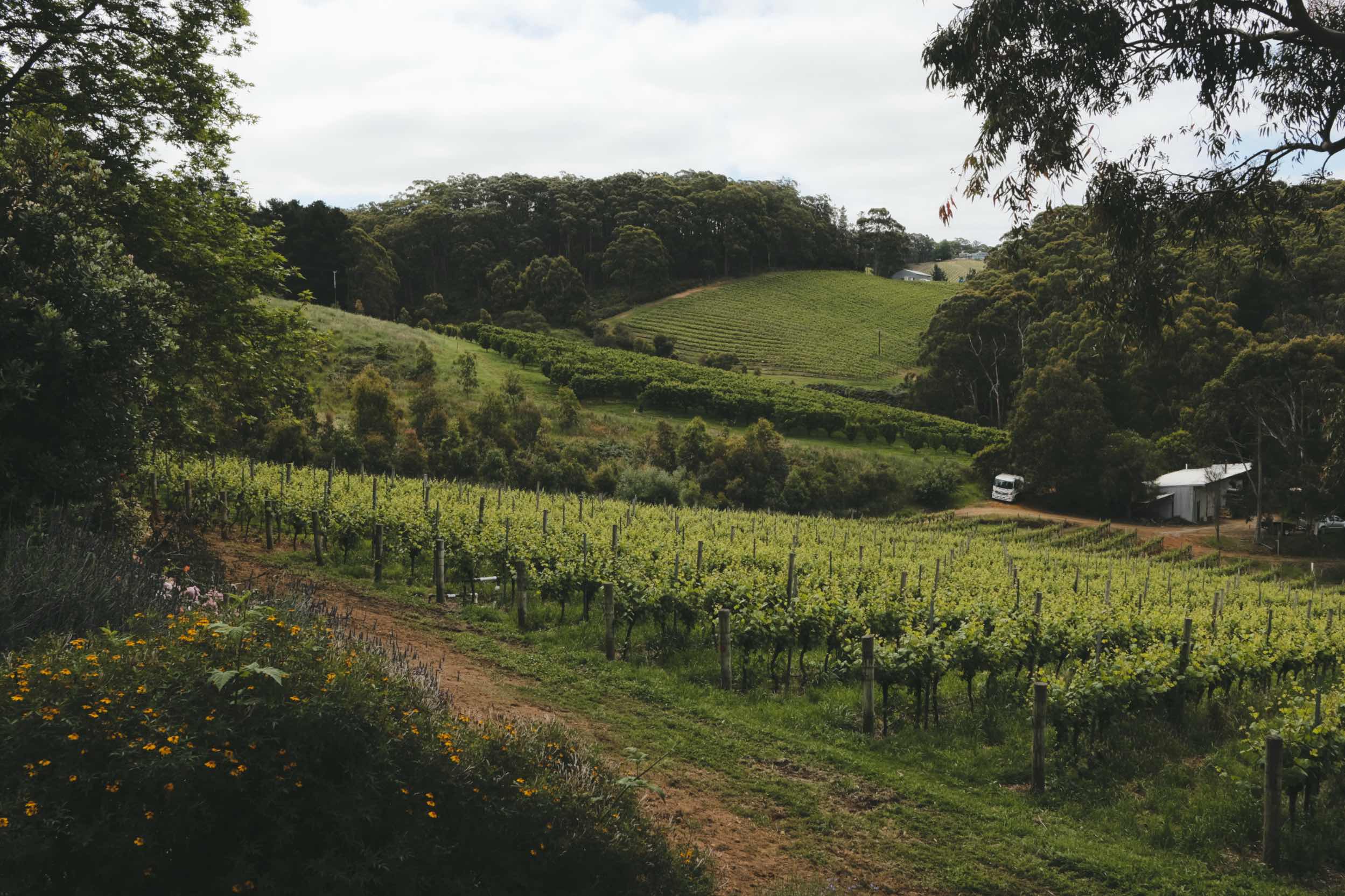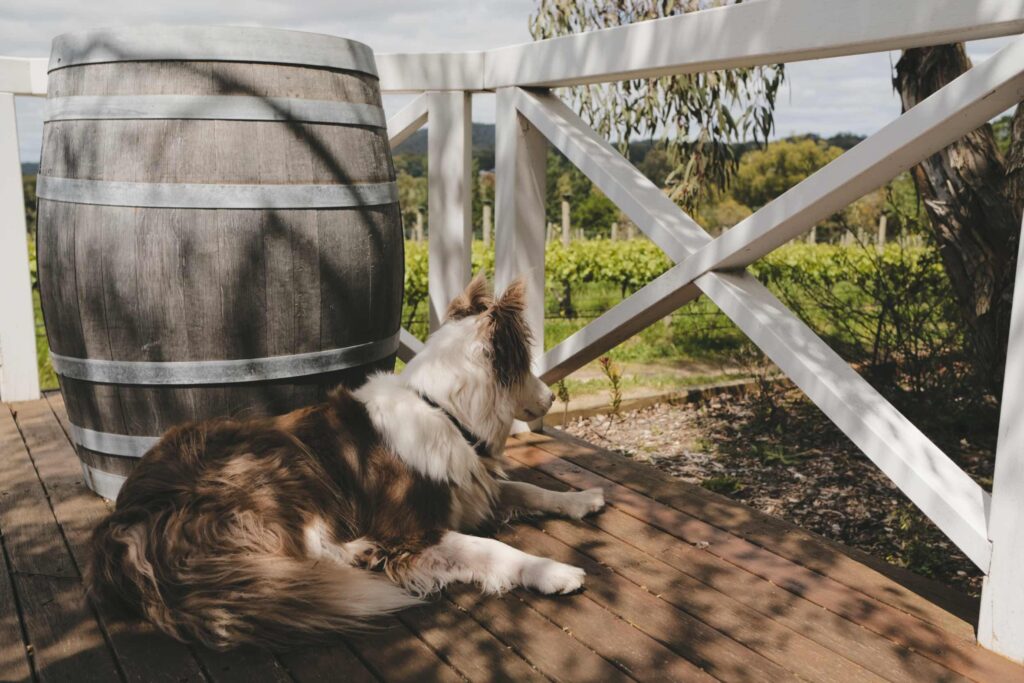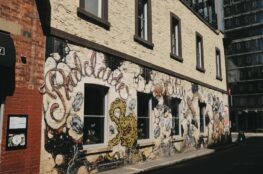Elevated, cooler climate and with a host of lower intervention and sustainable winemakers, Adelaide Hills was a perfect location for our first visit to South Australia. Rolling green hills, lush vegetation, and winding roads felt more akin to the wine regions of Europe than the typical image of Australia.
Adelaide Hills is directly east and only 30 minutes from Adelaide. Elevated at least 300m above sea level, the area enjoys lower than average growing season temperatures and higher rainfall than some of its valley counterparts such as areas of Barossa. These lower temperatures allow for crisp, clean chardonnays, aromatic and lime zest Rieslings, and some more unusual varietals such as fiano from the more experimental winemakers. For the reds it’s very much a pinot game in the Hills with numerous microclimates and soil types providing great variety from light, bright sour cherry numbers to earthy grippy examples. Moving away from the Australian fruit bomb shiraz, Adelaide Hills winemakers are making a more elegant iteration of the grape much closer to Rhone style Syrah.
After spending a couple of days wandering around Adelaide gathering recommendations from restaurants and bars along the way, we headed up into the Hills. We started where it all began, at the Penfold Magill Estate. Dr Christopher and Mary Penfold started planting vines in 1844 only a stone’s throw from Adelaide and started in fortified wines, prescribing them to patients 250ml 3 times daily – a suspiciously convenient dose given bottles often come in 750ml. Our tour of the winery which was supposed to be in a group but ended up just being the two of us was informative and expansive as we got to see all parts of the winemaking process. The tour finished with a selection of the Penfold’s range, from their Eden Valley Riesling, highly aromatic with zingy acidity all the way to their signature shiraz and cabernet collections providing full body and good structure. Penfolds aren’t out to push the limits of imagination and winemaking technique but provide reliable, high quality examples of what South Australia can do.
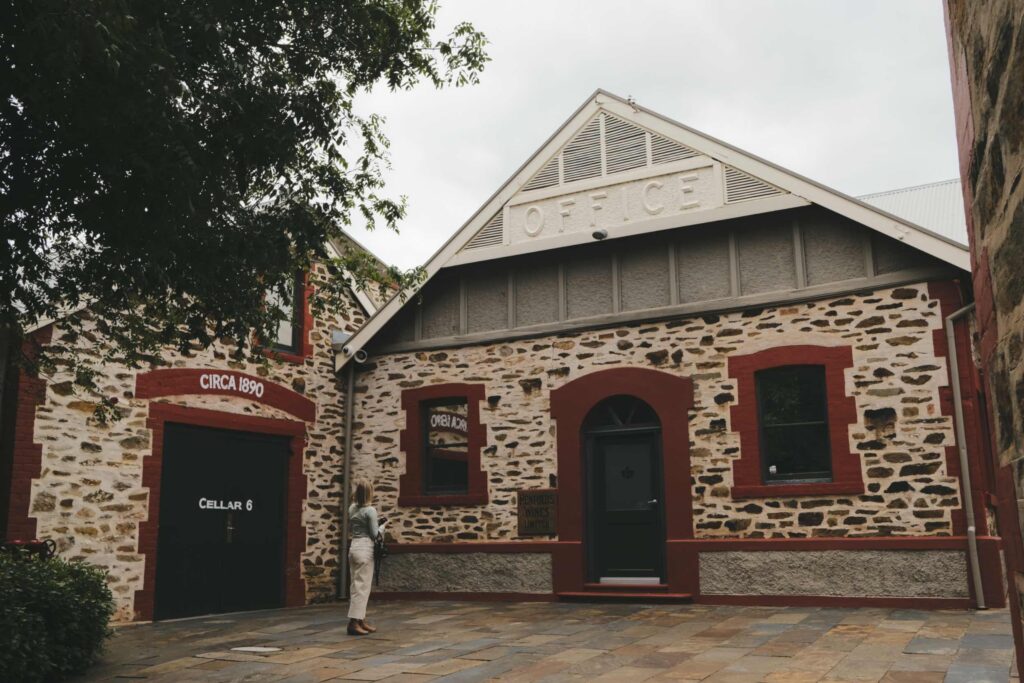
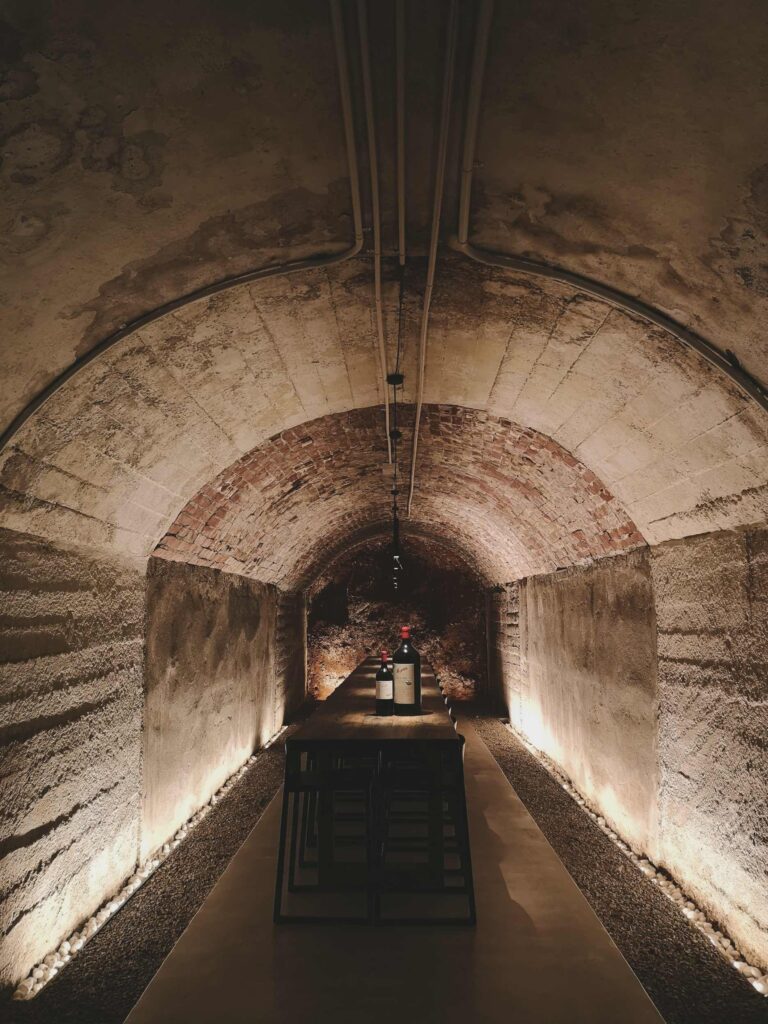
From traditional to outright funk we drove out to Unico Zelo, a winery we discovered through some good friends who gifted a bottle of ‘Jungle Jungle’ and a yuzu vermouth. Based out of Gumeracha they source grapes from all over South Australia and beyond with a firm leaning towards Italian varietals.
Unico. Love. Fiano. A white grape hailing from the hot coastal area of Campania in Southern Italy has great versatility and is perfectly exhibited by the variety of fianos on offer – crisp and mineral, tropical, and even a pet nat and 220 day skin contact orange wine. We bought their Txak Atak, a fiano made in the style of the steely, racy Txakoli produced out of the Spanish Basque country reminiscent of our trip to the stunning food capital of San Sebastian. Enjoy poured from a height in small serves whilst pintxos bar hopping through the narrow streets of the San Sabastian’s old town, or sat at home on a Tuesday evening – your choice. The reds also offer an interesting departure from shiraz and cabernet with their Nebbiolo, Barbera, Sangiovese blend, Nero D’Avola blend and a Dolcetto. The theme of high aromats with young red berry fruits and the absence of any jamminess, with a fresh zingy palate is present in all of the reds. Insta friendly branding, less commonly seen varietals made in light and bright styles at friendly prices make them a firm favourite, especially in the ever important pizza wine category. Attached to the cellar door is their co-venture, Applewood distillery. They make gin and liquors almost solely from native botanicals creating a uniquely Australian product. The base spirit, in part made from unusable grape juice from their winemaking signals the company’s commitment to sustainability and waste reduction. Native Riberries, Davidson Plum and Strawberry Gum Leaf in their Okar Island Bitters make it a powerful tonic and highly aromatic alternative to Campari in the world’s finest cocktail – The Negroni. Some unsolicited advice – instead of using a 1:1:1 ratio of ingredients, I have personally found using 1/2 to 3/4 shot of Okar to 1 each of vermouth and gin reduces the risk of blowing any delicacies from your gin and vermouth into next week.
Hatted restaurant and boutique winery rolled in to one, Mt Lofty Ranges vineyard is a small set up located on a winding country road in the Lenswood area of the Adelaide Hills. Views of steep vine covered hills stretching into the distance makes this a beautiful location to sample a few fine wines. Unfortunately, we did not have a chance to sample their award winning small plated menu including blue swimmer crab gazpacho, housemade focaccia, gnudi with squash and basil broth and a goat’s milk sorbet with poached pear to name but a few. The steep hills the vines call home are not machine friendly meaning all the vines are hand pruned and picked, and this attention to detail runs through the winemaking process with sustainability at the centre of their production. Alongside the beautifully balanced selection of wines came a sample of small snacks including some stunning choux pastry which elevated our wine tasting experience. Next time we just need to make it to lunch to try more.
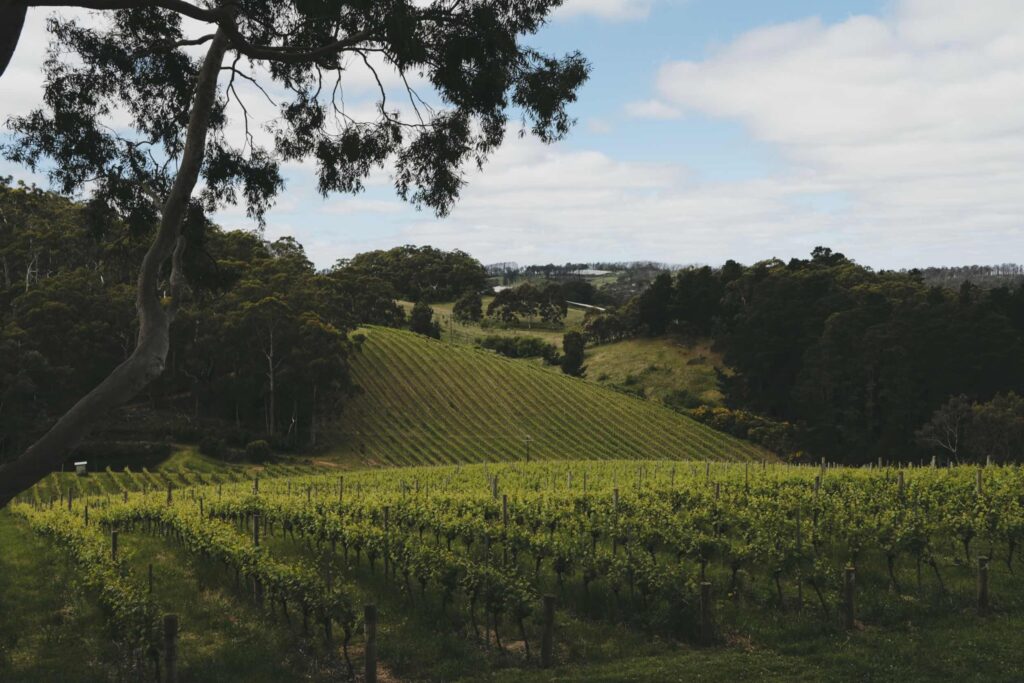
After accidentally missing lunch we had very empty stomachs ready for pizza at Lost in a Forest. A forty-minute walk from our accommodation over the hill to Uraidla allowed us to walk off the day’s wine tasting and take in the beautiful Adelaide Hills countryside at sunset. Situated in a converted church, they serve some funky pizza toppings including Shoogun, Japanese okinomayaki inspired and Banh Mi, taken from the famous Vietnamese pork sandwich roll complete with twenty hour cooked pork, crackling and a host of veggies. In true Adelaide hills fashion there is an excellent wine list with local, low intervention wines with a good selection from the renowned Ochota Barrels to wash it all down.
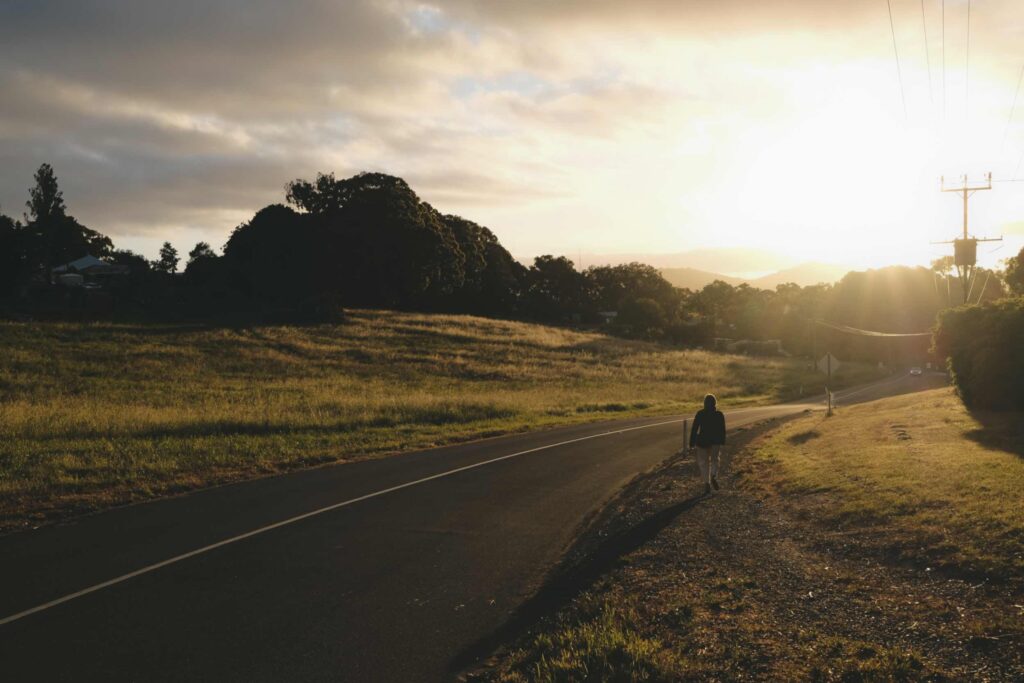

Tucked away in the Piccadilly Valley, Ashton Hills vineyard specialises in Pinot, more Pinot and a sprinkling of Riesling – right up our street. Driving up to the small cellar door overlooking the perfectly pruned grape vines, a beautiful light brown Collie bounded up to the car, insistently showing us to the front door whilst getting an excessive amount of attention from us. Clive was truly seasoned wine dog and made a great companion for our tasting. Sitting amongst the pinot noir vines it was time to get stuck in, starting with the incredibly small batch Riesling. From just over a third of a hectare comes a powerfully fragrant Riesling almost sweet with great florals on the nose leading to a surprisingly crystalline palate with amazing citric notes and the slightest hint of sweetness. Their pinot noirs come in 3 guises, ranging from the sour cherry and fresh raspberry forward Piccadilly to the Estate showing dried cranberry with a more persistent finish and tannin. Last of all was the Reserve pinot noir, wild fermented in a barrel with a third new oak. It tasted of blackberries with a big heft of earth delivering a complex tannin structure and beautiful acidity, a truly fantastic drop.
To avoid the travesty of missing lunch again we booked into Lot.100, a co-operative of sorts set on an old cattle pasture now home to all things booze including a cidery, brewery distillery and of course a natural winemaker. The food set up comes in 2 guises, a restaurant offering a tasting menu of the day or the courtyard serving pizza and charcuterie with a paddock to plate, local producer heavy ethos behind all of the food. We opted for the more chilled courtyard option going for a spicy nduja pizza with a beautifully browned crust and hot salty topping with a side of fresh locally made young cheeses. Sustainability is at the heart of everything they do with swathes of solar panelling, and water capture and filtering techniques means you leave Lot.100 with a full stomach and ethically sound.
